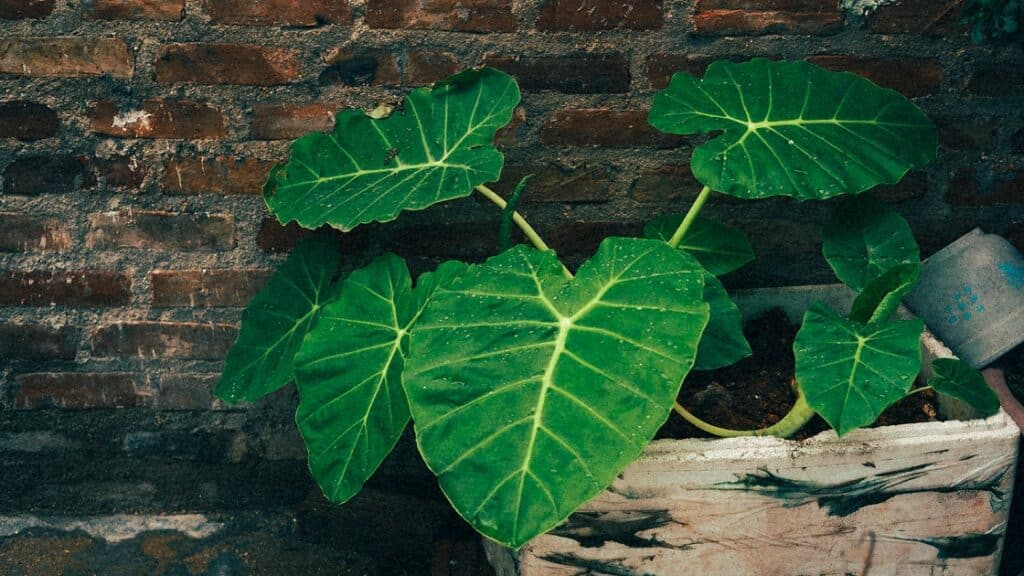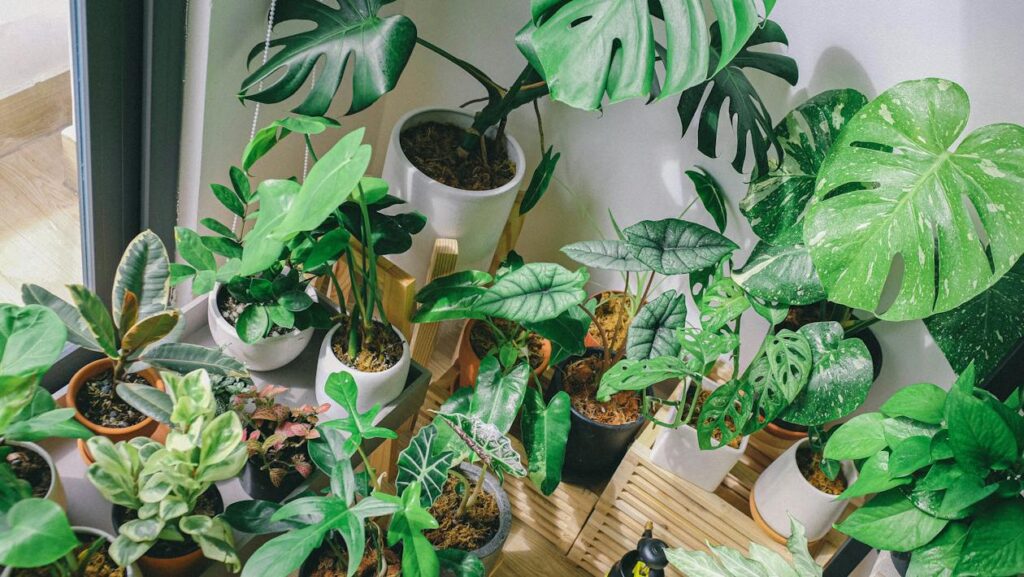Uncover the mystery behind why is my cactus turning black at the bottom with our expert insights. Don’t let the darkness spread – learn how to revive your cactus and keep it flourishing.
You love your cactus dearly, admiring its unique shape and resilience. But lately, you’ve noticed something concerning – why is my cactus turning black at the bottom. This unexpected change has left you wondering what could be the cause, as your green and vibrant companion is slowly losing its luster. In this article, we will explore the reasons behind this peculiar phenomenon and provide you with helpful insights on how to address it, ensuring your beloved cactus thrives once again.

Possible Causes: Why Is My Cactus Turning Black at the Bottom
Cacti are generally known for their resilience and ability to thrive in harsh conditions, but sometimes their foliage may turn black, indicating an underlying issue. There are several potential causes for this why is my cactus turning black at the bottom, ranging from overwatering to pest infestations. In this article, we will explore each possible cause in detail and provide guidance on how to address and prevent them.
1. Overwatering
Signs of overwatering
Overwatering is a common mistake that many plant owners make, including cactus enthusiasts. It occurs when you provide your cactus with more water than it needs, leading to moisture overload in the soil. Some signs of overwatering your cactus include blackening of the lower foliage, a soft and mushy texture, and a strong, musty odor emanating from the soil.
How to fix overwatered cactus
To fix an overwatered cactus, you first need to address the issue of excessive moisture. Remove the cactus from its pot and inspect the roots. If you notice any signs of rot, carefully trim away the affected parts using sterilized pruning shears. Allow the plant to dry out completely before repotting it in well-draining soil. Adjust your watering schedule and ensure the soil dries out between waterings.
Preventing overwatering
To prevent overwatering, make sure you understand your cactus’s specific water needs. Research the particular species of cactus you have and find out how often it requires watering. Always check the soil moisture before watering and ensure that the soil is completely dry before watering again. Additionally, be mindful of the pot in which your cactus is planted. Choose a pot with drainage holes to allow excess water to escape.

2. Underwatering
Signs of underwatering
On the other end of the spectrum, underwatering can also cause why is my cactus turning black at the bottom. When a cactus doesn’t receive enough water, it goes into survival mode, conserving its resources by sacrificing lower foliage. Signs of underwatering include shriveled and wrinkled stems, dry and brittle foliage, and a general lack of vitality.
How to fix underwatered cactus
To remedy an underwatered cactus, you need to gradually increase the amount of water it receives. Start by thoroughly watering the plant until water drains out of the bottom of the pot. Allow the soil to dry out completely between subsequent waterings, but ensure that the dry period is not prolonged to the point of causing drought stress.
Preventing underwatering
Preventing underwatering involves establishing a regular watering routine that meets the specific needs of your cactus. Research the watering requirements of your cactus species and create a watering schedule accordingly. Keep in mind that environmental conditions, such as temperature and humidity, may affect the frequency of watering. Regularly monitor the appearance and behavior of your cactus to determine if adjustments need to be made to your watering routine.
3. Fungal Infections
Common fungal infections
Fungal infections can wreak havoc on your cactus and turn its foliage black. Some common fungal infections affecting cacti include black spot fungus, powdery mildew, and stem rot. These infections are often caused by excessive moisture or poor air circulation, creating an environment conducive to fungal growth.
Symptoms of fungal infection
When a cactus is infected with a fungal disease, the foliage may start turning black. You may also notice discolored or spotted areas on the stems or leaves, a fuzzy or powdery substance on the surface of the plant, or a foul odor emanating from the infected areas.
Treatment options
Treating fungal infections in cacti involves removing the infected parts of the plant using sterilized pruning shears. Make clean cuts below the infected areas to prevent the spread of the disease. Afterward, apply a fungicidal treatment to the remaining healthy portions of the plant to combat any remaining fungal spores. Ensure that the plant is placed in an area with good air circulation to promote faster drying and prevent reinfection.
Preventing fungal infections
To prevent fungal infections, it is crucial to avoid excessive moisture and ensure proper air circulation around your cactus. Avoid overhead watering and water at the base of the plant to keep the foliage dry. Ensure that your cactus is planted in well-draining soil and avoid overcrowding plants, as this can impede air circulation. Regularly monitor your cactus for signs of fungal diseases and take prompt action if any symptoms are detected.

4. Root Rot
Causes of root rot
Root rot is a serious condition that occurs when the roots of a cactus become infected and start decaying. It is primarily caused by overwatering, as excessive moisture in the soil creates a favorable environment for fungal pathogens such as Pythium or Phytophthora.
Signs of root rot
One of the most apparent signs of root rot is why is my cactus turning black at the bottom and mushy texture of the roots. The affected cactus may also exhibit wilting, yellowing, or drooping of the upper foliage. The plant may become unstable and might easily loosen from the soil when gently touched.
How to treat root rot
Treating root rot requires immediate action to save the affected cactus. Start by carefully removing the cactus from its pot and inspecting the roots. Trim away any rotted, blackened roots using sterilized pruning shears. Afterward, allow the plant’s roots to dry out for several days before repotting it in fresh, well-draining soil. Adjust your watering habits to prevent future occurrences of root rot.
Preventing root rot
To prevent root rot, it is crucial to maintain proper watering practices. Ensure that the soil is dry before watering again and never let your cactus sit in standing water. Opt for pots with drainage holes and use well-draining soil to keep excess moisture at bay. Additionally, avoid overfertilization, as excessive nutrients can weaken the roots and make them susceptible to rot.
5. Sunburn
Causes of sunburn
Cacti are known for their love of sunlight, but they can also suffer from sunburn if exposed to sudden intense sunlight without proper acclimatization. This is particularly true for indoor cacti that are transferred outdoors or placed near windows with direct sunlight. Sunburn occurs when the cactus’s tissues become scorched and damaged by excessive UV radiation.
Signs of sunburn
Sunburned cacti often exhibit blackened patches on the affected areas. The discolored portions may also appear withered or dried out. The damaged areas of the cactus may become soft and mushy to the touch.
Treating sunburned cactus
To treat sunburned cacti, it is essential to provide them with adequate shade and protect them from direct sunlight. Move the affected cactus to a location with filtered or indirect light. If the damaged areas have become mushy or rotten, carefully trim away the affected portions using sterilized pruning shears. Ensure that the cactus is gradually reintroduced to sunlight to prevent further sunburn. This protects the why is my cactus turning black at the bottom.
Preventing sunburn
Preventing sunburn involves gradually acclimatizing your cactus to direct sunlight if you plan to move it from indoor to outdoor settings. Start by placing the cactus in a location with indirect light and gradually expose it to longer periods of direct sunlight. Consider using a sheer curtain or shade cloth to filter the intensity of sunlight if your cactus is near a window. Regularly monitor your cactus for signs of sunburn and adjust its lighting conditions accordingly.
6. Physical Damage
Causes of physical damage
Physical damage to a cactus can occur due to a variety of reasons, including accidental bumping, rough handling, or even pests such as birds or rodents. When the plant’s tissues are not healthy, it can result in the foliage turning black as a response to the damage.

Identifying physical damage
Physical damage can manifest as bruised or blackened areas on the cactus’s stems or leaves. In severe cases, the damage may extend to the inner tissues, leading to decay and rot.
Steps to repair damaged cactus
To repair why is my cactus turning black at the bottom. Indeed, it is important to first assess the extent of the injury. If the damage is superficial, you can simply remove any black or injure portions using sterilize pruning shears. Make clean cuts to minimize the risk of infection or disease. If the damage is extensive or involves deep tissue injury, it may be challenging to salvage the affected parts. In such cases, it is best to focus on providing the cactus with optimal care and allowing it to recover on its own.
7. Poor Drainage
Importance of proper drainage
Proper drainage is crucial for the health of a cactus, as it helps prevent waterlogged soil and excessive moisture around the roots. Without adequate drainage, the cactus may develop root rot and eventually exhibit blackened foliage as a result.
Signs of poor drainage
Signs of poor drainage include water pooling at the bottom of the pot, the soil staying constantly moist or wet, and a persistent musty smell emanating from the soil. Over time, these conditions can lead to root rot and cause the foliage to turn black.
Improving drainage
To improve drainage, ensure that your cactus is planted in a pot with drainage holes. When watering your cactus, allow excess water to drain out completely, and never let the pot sit in standing water. Consider layering the bottom of the pot with gravel or small stones to create an additional drainage layer. Additionally, using a well-draining soil mix specifically formulated for cacti can enhance drainage and prevent waterlogging.
8. Pest Infestation
Common pests affecting cacti
Cacti are not immune to pest infestations, and various insects can cause damage to their foliage. However, common pests include mealybugs, scale insects, spider mites, and aphids. These pests feed on the sap of the cactus, causing discoloration and potentially leading to the blackening of the foliage.
Identifying pest infestation
Signs of pest infestation include the presence of tiny insects on the cactus, sticky residue on the plant or nearby surfaces, and discolored or deformed foliage. You may also notice the presence of webbing or cotton-like clusters left behind by certain pests.
Treatment options
Treating pest infestations typically involves a multi-step approach. Start by manually removing the pests using a cotton swab dipped in rubbing alcohol or a mild insecticidal soap solution. Ensure that you cover both the upper and lower surfaces of the foliage. For severe infestations, you may need to resort to stronger pesticides, but always follow the instructions and precautions on the label. Regularly inspect your cactus for any signs of reinfestation and take immediate action if necessary.

Preventing pest infestation
Preventing pest infestations is best accomplished through good plant care practices. Moreover, Inspect new cactus plants before bringing them indoors and isolate them from your other plants for a period of time to ensure they are pest-free. Regularly inspect your cactus for any signs of pests and remove them promptly. Moreover, consider applying organic insecticides on a preventive basis. Additionally, maintaining a clean and well-ventilated environment around your cactus can help deter pests.
10. Environmental Stress
Causes of environmental stress
Cacti are adapted to thrive in specific environmental conditions, but environmental stress is the reason why is my cactus turning black at the bottom. However, any significant deviations from their ideal conditions can cause stress. Environmental stressors include extreme temperatures, fluctuations in humidity, exposure to drafts, or sudden environmental changes.
Identifying environmental stress
Cacti experiencing environmental stress may display blackened foliage as a response to the adverse conditions. Additionally, you may observe wilting, yellowing or stunted growth, or a general decline in the overall health of the plant.
Mitigating environmental stress
To mitigate environmental stress, it is crucial to provide your cactus with optimal growing conditions. Thus, this includes providing adequate light, maintaining appropriate temperature and humidity levels, and shielding your cactus from extreme weather conditions. Indeed, consider using a humidifier or misting the air around your cactus during dry seasons. Gradual acclimation to new environments can also help prevent sudden environmental stress.
Protecting cactus from extreme conditions
Extreme conditions can pose a significant threat to cacti. During periods of extreme heat, consider providing your cactus with shade or relocating it to a cooler area. Similarly, during cold spells, move the cactus indoors or provide it with insulation to protect it from freezing temperatures. However, monitoring weather forecasts and taking appropriate action will help safeguard your cactus from the negative effects of extreme environmental conditions.
Conclusion
Thus, various factors can contribute to why is my cactus turning black at the bottom. Understanding the potential causes, signs, and treatment options for each issue is crucial for maintaining the health and vitality of your cactus. However, by implementing proper care practices and addressing any problems promptly, you can ensure that your cactus thrives and retains its vibrant, healthy foliage.




